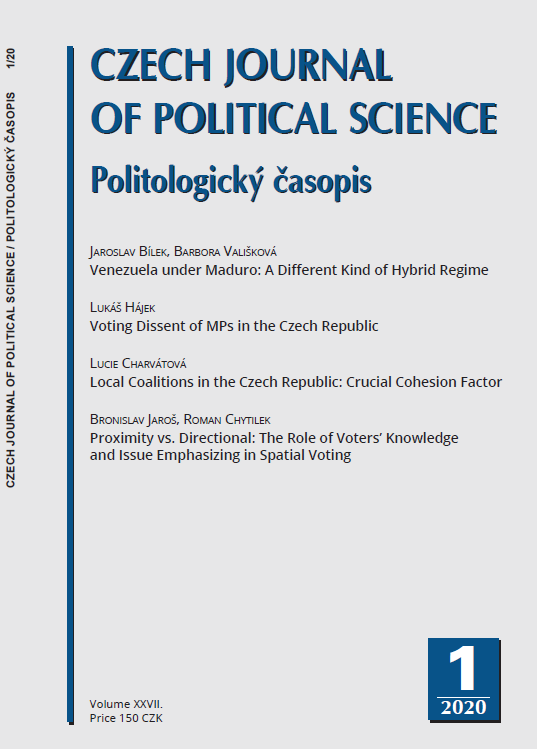Proximity vs. Directional: The Role of Voters’ Knowledge and Issue Emphasizing in Spatial Voting
Proximity vs. Directional: The Role of Voters’ Knowledge and Issue Emphasizing in Spatial Voting
Author(s): Roman Chytilek, Bronislav JarošSubject(s): Politics / Political Sciences, Social Sciences, Electoral systems
Published by: Masarykova univerzita nakladatelství
Keywords: sophistication; voting behaviour; proximity theory; directional theory; saliency;knowledge;
Summary/Abstract: Recent findings related to the controversy over proximity and directional spatial models of voting suggest that the relevance of the models can change under different conditions. The political sophistication of voters and the issue factor are discussed in this article. In line with other authors, we believe that it is necessary to focus also on the question whether the examined issue is salient for the voter-party relationship. Contrary to what was expected, when voters’ preferences for parties emphasizing a particular issue are predicted by increasing sophistication of voters, it does not mean that these preferences are predicted by the proximity theory at the same time. Moreover, the directional theory is a better predictor of voters’ preferences for most of the issues, regardless of the sophistication influence. Yet voters’ proximity utilities from their preferences are increased by their increasing sophistication across all of the issues under examination.
Journal: Politologický časopis - Czech Journal of Political Science
- Issue Year: XXVII/2020
- Issue No: 1
- Page Range: 65-90
- Page Count: 25
- Language: English

